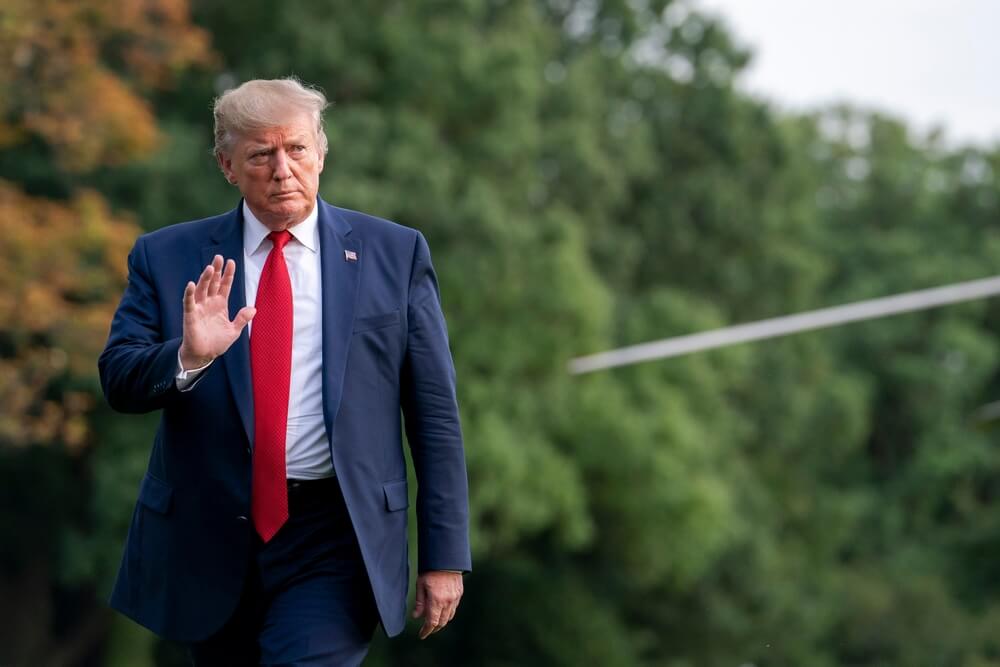A few years ago, there was an overarching global consensus on trade: the freer, the better. Only nerdy economists spent much time agonizing over the details of trade policy, and special-interest groups were pretty much alone in advocating protections.
Overall, tariffs were relatively low, most governments sought to attract foreign investment, and technology transfers were viewed as a way to spread prosperity. Not anymore.
Thirty-five years after the military strategist Edward N. Luttwak coined the term “geoeconomics” to describe when the “logic of conflict” meets the “grammar of commerce,” the concept is gaining new resonance.
There is a growing consensus in many countries that trade policy should be viewed mainly through the lens of geopolitics.
But as Luttwak observed, a geopolitical conflict is, at best, a zero-sum game: one side’s gains are the other side’s losses.
By contrast, trade is typically a win-win game – no matter how vociferously President Donald Trump argues that other countries are ripping off the United States.
This tension is unavoidable; any attempt to use economic measures for geopolitical ends will eventually run up against it.
And yet, most policymakers never get that far. Trump, for example, is pursuing such an ill-conceived tariff strategy that it can only be counterproductive. Nowhere is this more apparent than in his trade war against China.
The US would lose more than China
It should be obvious that, in a war, you should seek to inflict more damage on your enemy than on yourself.
But all available simulations of the impact of the various tariff scenarios that have emerged over the last few months show that the US would lose more than China.
The reason is simple: the US and China account for about one-quarter and one-fifth of the global economy, respectively, but China slightly surpasses the US in exports – and about 80% of those exports go to countries other than America.
The US does not have the power to inflict significant economic damage on China
In other words, the US does not have the power to inflict significant economic damage on China.
But, by imposing high tariffs on China, it does raise the price of imports for domestic businesses and households, whether because they have to pay the tariffs (the costs of which importers pass along to consumers) or because they have to substitute more expensive imports from elsewhere.
This is probably a key reason why Trump agreed to a truce with China.
In any case, even if we are talking about other countries, with different economic sizes and trade volumes, tariffs are not a useful instrument to weaken a geopolitical adversary.
Nor are other popular geoeconomic tools, such as restrictions on supplies of essential inputs. For example, earlier this year China began to require export licenses for rare-earth minerals.
A winning strategy
At first glance, this might look like a winning strategy. After all, most of the global supply of rare-earth minerals is used for manufacturing high-tech products. But the economic significance of rare earths is far more limited than is generally assumed.
Rare-earth minerals are traded in two forms. When commentators and politicians lament than around 70% of US imports of rare earths come from China, they are referring to relatively unprocessed rare-earth metals. But total US imports of rare-earth metals amount to just $22 million annually – a negligible share of overall US imports.
Trade in much higher value-added rare-earth compounds, which have been through more processing, is much more important. And here, the US has a large surplus, particularly with China.
US exports of rare-earth compounds stand at $355 million – more than twice as high as imports ($161 million) – with nearly 90% going to China.
The US manufacturing sector does not need large quantities of rare-earth compounds
This should not be surprising. The US manufacturing sector is rather small and specialized, focusing on niche high-tech products, so it does not need large quantities of rare-earth compounds.
To be sure, rare-earth compounds are used to produce some military equipment, such as fighter jets. A single F-35 requires several hundred pounds of rare earths. But very few such planes are being built.
Meanwhile, billions of smartphones and similar devices are being manufactured annually – largely in China.
Geoeconomic activism
If China limits exports of low-value rare-earth metals, it risks the supply of the rare-earth compounds that its manufacturing sector needs.
This might be one reason why the market reaction to has been muted: though the prices of rare-earth elements are highly variable, given the thin market, they have moved little since China introduced export-licensing rules.
Prices of only two of these elements have increased significantly – 30% since January 2025 – and they remain below their 2022 peak.
 The blind embrace of geoeconomic activism may prove not only ineffective, but even counterproductive. That is as true for China as it is for the US - Donald Trump
The blind embrace of geoeconomic activism may prove not only ineffective, but even counterproductive. That is as true for China as it is for the US - Donald Trump
But even if prices did spike, the damage to the US economy would be limited, since these imports amount to only about $20 million.
Even if permanent magnets without rare earths are ten times more expensive, the cost to the US would be $200 million – a rounding error for an economy of America’s size.
And there is another problem with such geoeconomic tools: they can typically be used only once.
If supply is restricted – whether by tariffs, export-licensing rules, or some other mechanism – importers quickly adapt, such as by finding alternative supplies or accumulating stockpiles. That way, they will be able to withstand any further supply restrictions.
All of this should serve as a warning: the blind embrace of geoeconomic activism may prove not only ineffective, but even counterproductive. That is as true for China as it is for the US.
Daniel Gros is Director of the Institute for European Policymaking at Bocconi University.